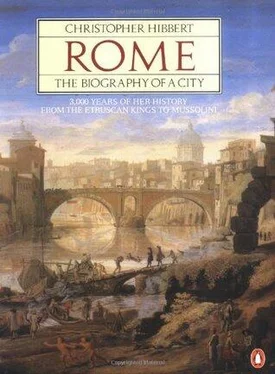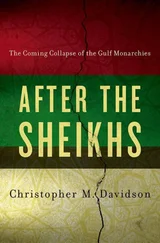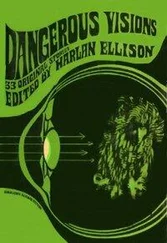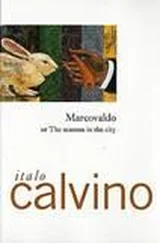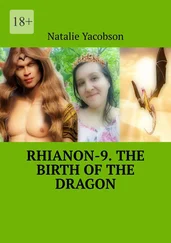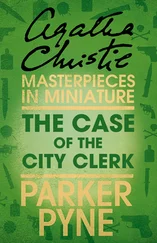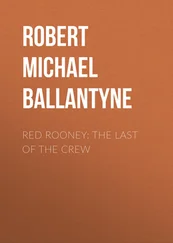Christopher Hibbert - Rome. The Biography of the City
Здесь есть возможность читать онлайн «Christopher Hibbert - Rome. The Biography of the City» весь текст электронной книги совершенно бесплатно (целиком полную версию без сокращений). В некоторых случаях можно слушать аудио, скачать через торрент в формате fb2 и присутствует краткое содержание. Жанр: Культурология, Искусство и Дизайн, на английском языке. Описание произведения, (предисловие) а так же отзывы посетителей доступны на портале библиотеки ЛибКат.
- Название:Rome. The Biography of the City
- Автор:
- Жанр:
- Год:неизвестен
- ISBN:нет данных
- Рейтинг книги:3 / 5. Голосов: 1
-
Избранное:Добавить в избранное
- Отзывы:
-
Ваша оценка:
- 60
- 1
- 2
- 3
- 4
- 5
Rome. The Biography of the City: краткое содержание, описание и аннотация
Предлагаем к чтению аннотацию, описание, краткое содержание или предисловие (зависит от того, что написал сам автор книги «Rome. The Biography of the City»). Если вы не нашли необходимую информацию о книге — напишите в комментариях, мы постараемся отыскать её.
Rome. The Biography of the City — читать онлайн бесплатно полную книгу (весь текст) целиком
Ниже представлен текст книги, разбитый по страницам. Система сохранения места последней прочитанной страницы, позволяет с удобством читать онлайн бесплатно книгу «Rome. The Biography of the City», без необходимости каждый раз заново искать на чём Вы остановились. Поставьте закладку, и сможете в любой момент перейти на страницу, на которой закончили чтение.
Интервал:
Закладка:
The Romans were provoked rather than subdued by these humiliations. And for the rest of the century and well into the next the disturbances and intermittent violence in the city continued unabated, while the papacy was beset by repeated scandals and the rivalry of anti-popes. Already one pope, Stephen VI, had ordered the exhumation of the body of Pope Formosus, a predecessor who had offended him. The corpse was clothed in pontifical vestments, seated upon a throne and put on trial. Found guilty of all the offences with which it was charged, it was stripped of its vestments; the three fingers of the right hand with which papal benediction was customarily bestowed were torn off; and the remains were then thrown into the Tiber. Some months later the pope who had presided over this gruesome tribunal was thrown into prison and strangled. His successor was violently deposed, the next pope murdered, and by 904 when Pope Christopher was executed, having murdered his predecessor, Leo V, there had been eight popes in as many years. It had long since become customary for the servants of a dead or deposed pontiff to overrun his private apartments and the public rooms in the Lateran Palace, with as many of the populace as could gain admittance, and for them to carry off everything that came to hand, clothes and money, furniture and hangings, pictures, gold and silver. Yet the Lateran was soon filled with treasures once more, since popes who did not find means to enrich themselves were few. So were lesser prelates whose pleasure-bent lives were passed in what Gregorovius described as ‘sumptuous dwellings, resplendent in gold, purple and velvet’.
They dined like princes on vessels of gold. They sipped their wine out of costly goblets or drinking horns. Their basilicas were smothered in dust, but their commodious wine goblets were resplendent with decoration. As at the banquet of Trimalchio, their senses were gratified with the spectacle of beautiful dancing girls and the ‘symphonies’ of musicians. They slept on silken pillows and on beds artificially inlaid with gold, in the arms of their paramours, leaving their vassals, servants and slaves to look after the requirements of their court. They played at dice, hunted and shot with the bow. They left the altar, after celebrating Mass, with spurs at their ankles, daggers at their sides to mount their horses – furnished with gold bridles – and to fly their falcons. They travelled surrounded by swarms of parasites, and drove in luxurious carriages which no king would have scorned to possess.
The death of Pope John XIII in 972 and that of his protector, the Emperor Otto I, the next year did nothing to end the rivalry between the Roman nationalists and the imperialists. John XIII's successor, an imperial nominee, Benedict VI, was dragged into Castel Sant' Angelo and strangled in 974 in an insurrection led by the powerful Roman family, the Crescenzi, who installed Boniface VII, a Roman, in his place. The anti-Pope Boniface VII was then expelled from Rome by the Emperor's young heir, Otto II, and replaced by Benedict VII; and the Roman, led by the Crescenzi, were thereafter continually at odds with successive emperors. Otto II died in 983, and since his heir, Otto III, was a child of three whose throne was in danger of usurpation, Boniface VII thought it safe to return to Rome from Constantinople where he had fled with the papal treasury. In Rome he had Pope Benedict's successor, John XIV, arrested, imprisoned and killed, either by starvation or poisoning. Boniface himself was then murdered by the fickle mob and his corpse was thrown under the statue of Marcus Aurelius. Thus it went on. Boniface's successor, a Roman antagonistic to the Crescenzi, was followed by a pope of pure German descent, Gregory V, whom the Crescenzi and their adherents drove out of Rome, offering the papal tiara for a large sum of money to a rich Greek who accepted it and thus became the anti-Pope, John XVI. As soon as he heard of these insults to his imperial authority, Otto III, now seventeen, marched south upon Rome with a large army and discovered the anti-Pope hiding in the Campagna. He cut off his nose, tongue and ears, tore out his eyes, and dragged him back to Rome where he was thrown into the cell of a monastery to die. The Emperor then advanced towards Castel Sant' Angelo where the Romans were holding out, took it by assault on 29 April 998, and captured the head of the Crescenzi family whose eyes were snatched from his skull and whose limbs were mutilated before he was dragged through the streets on the skin of a cow, decapitated on the battlements and finally displayed on a gallows on the Monte Mario beside the corpses of twelve other leading Romans who had taken part in the revolt.
‘Woe to Rome!’ lamented a monkish chronicler at about this time. ‘Oppressed and downtrodden by so many nations! Thou art taken captive; thy people are ruled by the sword. Thy strength is become as naught… Thou wert too beautiful… Thy gold and thy silver are carried away in the sacks of thine enemies. What thou didst possess thou hast lost!’
Yet there were even worse times still to come. Power in Rome now passed from the Crescenzi to another influential family whose estates looked down upon Rome from the heights of Tusculum. In 1032, the Tuscolani, several members of whose family had already held the office, arranged for another of their kin, though a mere boy, to be elected Pope Benedict IX; and in his time the papacy reached the utmost depth of moral degradation. The young Pope lived like a Turkish sultan in the palace of the Lateran, while his brother ruled the city as ‘Senator of the Romans. Their family filled Rome with robbery and murder, according to Gregorovius whose lurid account does not seem to have been unduly exaggerated. ‘All lawful conditions had ceased… Only an uncertain glimmer, however, falls on these days when the Vicar of Christ was a pope… more criminal than Heliogabalus. We dimly see the leaders of Rome conspiring to strangle the youthful delinquent at the altar on the feast of the Apostles, until terror, produced perhaps by an eclipse of the sun, allowed Benedict time to escape.’
In 1044 a conspiracy to rid Rome of Benedict IX was more successful. But the anti-Pope who bribed his way to the succession, after savage fighting during an earthquake, was scarcely an improvement. Grossly sensual and corrupt, he was said to be closer to Satan than to Christ, to consort with devils in the woods, to attract women to his bed by spells, to conjure up demons with the help of books of magic which were afterwards found in the Lateran. He occupied the palace for less than two months. Driven out by the Tuscolani, he sought safety in the Sabine hills; and Benedict IX returned to the palace, only to sell his holy office to his godfather.
It seemed by now that the whole structure of the papacy was in danger of dissolution. But as at other times in its history when it seemed in the greatest peril, a man was found to save it. On this occasion its saviour was an obscure monk from the Cluniac monastery of St Mary on the Aventine hill.
Hildebrand, the son of a Tuscan labourer, had left his monastery to continue his education at the Schola Cantorum at the Lateran. Here his character earned him the high regard of one of the masters, the future Pope Gregory VI, who took him into his service. He later worked for Leo IX and Alexander II, two popes who in the middle part of the eleventh century concerned themselves with the reform of the medieval Church. The reform movement had begun in the monasteries of northern Italy and France from which attacks had been made on all manner of abuses in the Church from the sale of offices to the concubinage of the clergy. The reformers had then extended their programme to demand freedom from political and foreign interference and the right of the Church to be solely responsible for the election of popes and the investiture of bishops.
Читать дальшеИнтервал:
Закладка:
Похожие книги на «Rome. The Biography of the City»
Представляем Вашему вниманию похожие книги на «Rome. The Biography of the City» списком для выбора. Мы отобрали схожую по названию и смыслу литературу в надежде предоставить читателям больше вариантов отыскать новые, интересные, ещё непрочитанные произведения.
Обсуждение, отзывы о книге «Rome. The Biography of the City» и просто собственные мнения читателей. Оставьте ваши комментарии, напишите, что Вы думаете о произведении, его смысле или главных героях. Укажите что конкретно понравилось, а что нет, и почему Вы так считаете.
